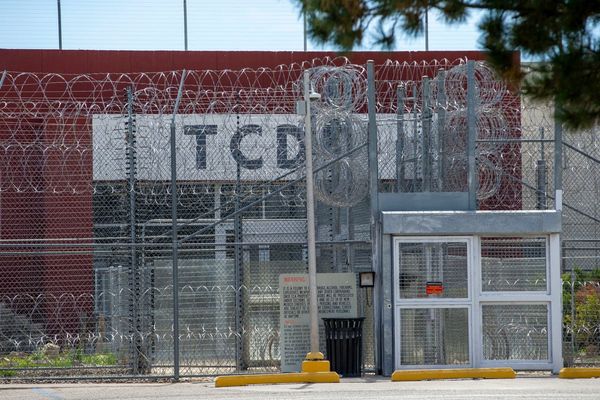
Southwest Airlines has implemented new portable charger flight rules to maximize flight safety. The updated policy focuses on lithium-ion battery safety, which has become a growing concern for the airline industry due to the risk of overheating or fire.
These changes impact how and when you can use power banks and other battery-powered accessories while onboard. Portable chargers and power banks are often essential in keeping your devices operational and you connected while traveling, and chances are you’ve likely used one while flying.
But the new Southwest Airlines battery policy changes how you can use your portable charger during flights. To avoid surprises at the gate or in the air, here’s what you need to know about Southwest’s updated battery policy.
How does the new Southwest Airlines battery policy change flight rules?

The Transportation Security Administration (TSA) requires that portable chargers or power banks that contain a lithium-ion battery be packed in carry-on bags. The TSA prohibits these devices from being stored in checked luggage. Southwest Airlines’ new rule follows those same guidelines, but implements additional restrictions on the use of portable chargers during flights.
Southwest Airlines’ new portable charger flight rules, which went into effect on May 28, prohibit passengers from using portable chargers or power banks while they’re stored in carry-on luggage or in an overhead bin. “When a portable charger/power bank is used during a flight, it must be out of any baggage and remain in plain sight,” states Southwest Airlines’ website. “Do not charge devices in the overhead bin.”
The policy also requires that portable chargers be protected against short circuits. For example, batteries should be kept in retail packaging or have the terminals covered with tape to prevent short circuits. Chargers must be packed in a carry-on bag or carried by the passenger when boarding.
Why did the Southwest Airlines battery policy change?
The changes to portable charger flight rules are part of an effort to reduce the risk of lithium-ion battery fires during flights.
According to UL Research Institutes, lithium-ion batteries can experience thermal runaway, an uncontrollable, self-heating condition. This can be triggered by internal short circuits, overcharging from incompatible chargers, external short circuits, or exposure to extreme temperatures. In severe cases, thermal runaway can cause the battery to catch fire.
Lithium-ion battery fires are increasingly common. The Fire Safety Research Institute reports that in 2023 alone, there were 268 reported fires involving lithium-ion batteries in New York City alone.
Such fires can be particularly dangerous when they occur on airplanes. According to Federal Aviation Administration data, there were 620 lithium battery incidents from March 3, 2006, through April 27, 2025. Of those incidents, 240 involved a battery pack or battery.
The rule change does not prohibit the use of portable chargers during flights, but it does require that passengers keep the chargers fully visible while they’re in use. Since chargers and lithium-ion batteries pose a fire risk, this change should hopefully minimize that risk and allow passengers to promptly spot any issues before an actual fire occurs.
Which airlines have similar portable charger flight rules?
Southwest Airlines isn’t the first airline to ban the use of portable chargers while they’re in luggage or in overhead bins.
In January 2025, an Air Busan plane caught fire at Gimhae International Airport in South Korea. Three people on the plane sustained minor injuries, and the plane was evacuated. A power bank battery found in an overhead luggage compartment likely caused the fire. The insulation inside the power bank had broken down, and scorch marks suggest it may have started the fire.
In response, the airline announced that passengers were no longer allowed to keep power banks in their onboard luggage. China has announced similar rules concerning portable chargers.
The South Korean government announced in February that passengers who board flights in South Korea will no longer be allowed to store portable chargers in their luggage and must instead carry the devices onto the flight.
Singapore Airlines and Thai Airways implemented an even stricter rule; the airlines banned passengers from using power banks on planes.
What you need to know when traveling with a portable charger
Safely traveling with a portable charger starts with the device that you buy. The Consumer Product Safety Office offers several recommendations to maximize the safety of your power bank or charger:
- Buy a device produced by a trusted manufacturer and brand
- Choose a portable charger or power bank that’s backed by a warranty
- Look for devices that have safety protection features, like over-charge and short-circuit protection
- Make sure you understand how to properly use the power bank
- Store the device in a cool, dry place away from high heat, moisture and dust
According to the new Southwest Airlines battery policy, you can still use a portable charger while flying, but it has to be visible. If you’re planning to fly, it may be easiest to just charge up your devices ahead of time, so you don’t have to worry about keeping the charger accessible.
Remember that you won’t be able to pack your charger in your checked luggage, so plan to bring it with you in your carry-on.
You can also use the plane’s built-in USB charging ports to charge your devices. Southwest Airlines installed seat-back USB charging ports on its 737 MAX airplane in 2023. The planes now feature USB A and USB C ports for passenger use.
What to know before you fly with a power bank
The new portable charger flight rules are designed to help increase the safety of all flights, minimizing lithium-ion battery fire risk. Chances are that more airlines will start to announce similar rules and precautions.
Before you start packing for your trip, be sure to check your airline’s updated rules so you’re aware of any changes about how to pack and use your portable charger and electronic devices.
If you have any questions about your portable charger or other devices, contact the airline in advance to get clarification and ensure a smooth boarding process.







